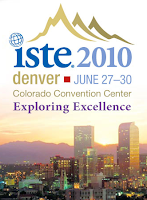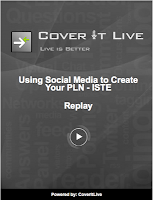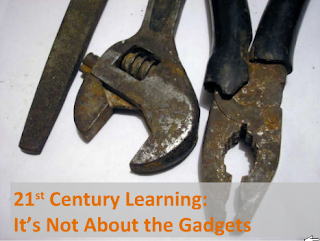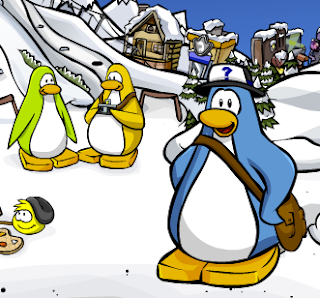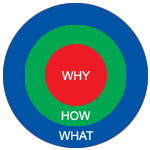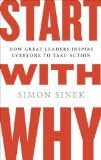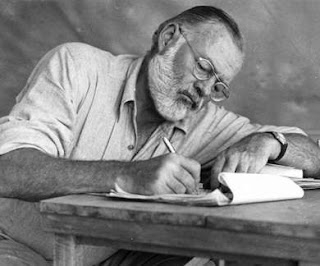I have just spent a wonderful week in Denver at the ISTE 2010 conference. Formerly known as NECC (National Educational Computing Conference), this event has been running for decades. I first attended in 1992 and have gone every year except once when I was in Malaysia and once when I had back surgery.
Sessions
The ISTE conference is filled with hundreds of sessions where educators share what they have been doing in their classrooms. Notice that I use the term, "share." The sharing attitudes of the attendees is what makes this experience so valuable. Presenters are sharing but the attendees will often share their ideas as well.
ISTE Leadership Symposium
My first "session" was the ISTE Leadership Symposium. This is an honor because it is by invitation only and I have been invited to attend over the past few years. It has been quite an experience. The best experience is the people you get to meet. I was honored to sit with Kathy Schrock, Dennis Harper, Scott Merrick, Bonnie Thurber, and Linda Lieberman. Best thing was that we also had a high school student from a Denver high school with us. His name was Culver. That is what is missing in our Educator Meetings - student, right Dennis? Culver was a great addition to the discussion. We were exploring new ways to situation schools. The final project for the team was to identify a unique environment for situating a school. We decided that it would work to put a high school in a mall. This would be a great place for business classes to help the store managers. It would also be useful for students in Consumer and Family Sciences. The best part is that it wouldn't be a problem getting the students to school because they usually hangout at the mall anyway. There were many other innovative ideas posted as well.
Regular Sessions
I didn't have a chance to attend too many sessions, but I enjoyed Howard Rheingold's presentation on Crap Detection 101.
I also attended the last hour of the EduBloggerCon on Saturday afternoon. This was good because I was able to get in on the last few minutes of a discussion of teachers' experiences with having their students online.
Excellence Lounges
You can also see sharing in much more informal settings. Throughout the conference setting are Excellence Lounges like the Bloggers Cafe. These are designated places where people of like interests can convene and talk. It is always nice to bump into someone whose blog you have been reading for years - Shout out to Bud the Teacher. It provides a basis for discussion when you meet them and a greater feeling of connectedness when you read them.
Another Excellence Lounge that I enjoyed was for the Virtual Environment SIG. It's always great to meet the humans who connect with the avatars that roam Second Life. I was walking by the lounge when Scott Merrick was taking the clan on a tour of a virtual world. He said "Hello, Leigh Zeitz" to me and I returned the salutation. Would you believe that 4 hours later I received a Skype message from my good friend, Pawel Topol, in Poznan, Poland. he said that he had been watching the presentation and saw me in the presentation.
THAT is what the I in ISTE stands for!!!!
Workshops
I was both the student and the teacher in ISTE workshops this year. I began my excursion with a 3-day Digital Storytelling workshop presented by Dr. Bernajean Porter. This was a wonderful experience that was as much about building and managing an effective learning community as it was about making digital stories. Bernajean ran the class as though she were preparing teachers to run such a class. She would always present the rationale for her teaching strategies as she used them. I will try to cover the essence of the class in a future posting.
I also ran a couple of workshops. The first workshop was entitled Digital Portfolios Made Easy with Google Sites and the second 3-hour workshop was Using Social Media to Build Your Personal Learning Network.
Digital Portfolios Made Easy
The Digital Portfolios Made Easy workshop is the continuation of a workshop I have been giving for probably 5 years. Andrew Krumm, a former student, and I originated templates for teacher portfolios and have presented them for conferences and teacher in-service sessions across the country. Here is the DPME slideshow that I used.
This workshop introduces those templates and provides the attendees with background to enable them to create/modify and implement these templates in their own personal settings. You can see more about this at DPME.org. I have written about my ideas on Digital Portfolios Made Easy in past postings, and will write more about the on-going evolution in future postings. This workshop was sold out with 30 students representing 8 states and 3 countries. It went well and I owe a great deal of it to my friend, Bonnie Thurber, who helped me as a lab assistant at the last minute.
Using Social Media to Build Your Personal Learning Network (PLN)
My other workshop was Using Social Media to Build Your Personal Learning Network (PLN) that I taught along with Lois Lindell. Lois and I have taught this workshop at the AECT conference in Florida and the ITEC conference in Coralville, Iowa. As the name suggests, we introduced the concept of a PLN and then had them use a variety of tools to develop their PLNs. This workshop only had 10 attendees and 4 of them were IT (Information Technology) people. HOOOOORAY!!! There MUST be more communication between IT folks and teachers so that they can work together and IT specialists won't be given names like the "Locked Nets Monsters."
Schmoooozing
Another aspect of the conference experience that is important is the network of connections that you create, build and maintain at these conferences. This is where I get to discuss ideas and make plans with others face-to-face. These sorts of connections can be made online, but nothing beats the face-to-face communication that you can have at a conference.
Unexpecteds
I didn't attend too many presentations because I was too busy either teaching, learning or schmoozing. Here are some interesting happenings in no particular order.
- Bumped into Rosie Vojek who I earned my Doctorate degree with at the University of Oregon in 1992. Hadn't seen her almost 2 decades and we connected in a real-world session about virtual worlds. She and her husband, Rob, have written a book, Motivate! Inspire! Lead!: 10 Strategies for Building Collegial Learning Communities. I haven't purchased my copy yet, but it looks like it will fit nicely into the books that I am reading nowdays.
- Had dinner with Vicki Davis and Julie Lindsay where we discussed the Flat Classroom Conference 2011 next February. The dinner wasn't as much a surprise as the wonderful Thai food we ate while there.
- I was also able to connect with a high school friend, Doug Hartwell, who I hadn't seen in almost 40 years (gosh I'm old.)
- I met Kevin Honeycutt who is a bundle of musical energy. He introduced me to:
- The Band app for the iPad and iPhone. This is an AWESOME musical application that turns musical theory into a musical instrument for all to play.
- I even had a chance to sit down and talk with my friend, David Thornburg.
Z

